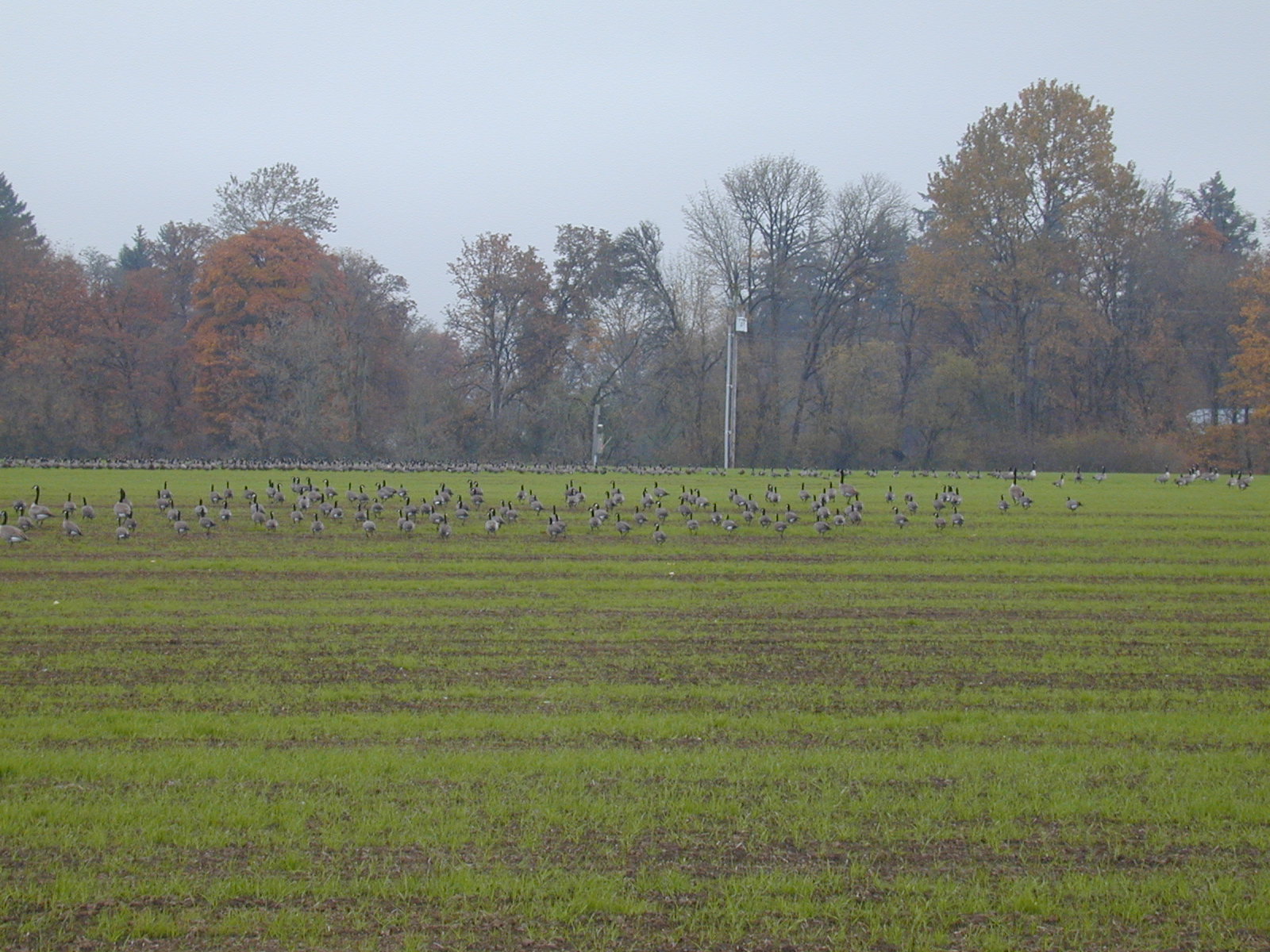Biological Agents (Natural Enemies)
Many birds, such as starlings, blackbirds, geese, and killdeer, feed on slugs throughout the fall and winter months. In addition, ground beetles and snakes feed on slugs; along with parasitic nematodes (discovered for the first time in the US in 2014), but currently are not commercially-available for use here in the United States at this time. Check out the book, Natural Enemies of Terrestrial Molluscs for a list of other taxa edited by Barker (2004).
Diseases (Pathogens)
The role of micro-organisms and disease-carrying pathogens in regulating slug populations is under studied. We have observed moribund slugs, but have not analyzed them to determine the pathogen. Some of the pathogens reported in literature that affect slug activity, survival and reproduction are: fungal diseases (e.g., Arthrobotrys), bacterial infections, many protozoa, sporozoa, ciliates, and cestodes can affect slugs (Wade and Thomas, 2001).
Invertebrate Predators (arthropods) can feed on slug eggs, neonates, juveniles, and live/dead adults:
- harvestmen, commonly known as daddy-long legs (Opiliones)
- wolf (Lycosidae) and other spiders
- centipedes (Chilopoda)
- several species of mites (e.g., Trombidiid)
- ground beetles (family: Carabidae) - Pterostichus melanarius
- rove beetles (family: Staphylinidae)
Rove Beetles (Family: Staphilynidae), Ground Beetle (Family: Carabidae, e.g., Pterostichus melanarius),
- flies such as the Marsh Flies (Family: Sciomyzidae, e.g., Sepedon spinipes), and other flies in the families Phoridae and Sarcophagidae that feed on slug eggs and neonates.
Vertibrate Predators
- Reptiles: snakes, lizards
- Amphibians: frogs, toads
- Birds: geese, starlings, killdeer
- Sheep*
*Sheep can physically kill slugs with their hooves by walking on them; and can accidently eat them while feeding on foliage.


Dreves and Fisher 2008. OSU Seed Production Research Report
A study was conducted in a third year, unirrigated white clover field grown in Linn Co., Oregon. In October 2007, slug population densities in white clover were compared between plots grazed with sheep during the summer after clover seed harvest and plots where sheep were excluded. We determined slug densities in the two treatments immediately after sheep removal and prior to direct seeding of perennial ryegrass (PRG) in the fall.
Parasites of slugs
The nematode, Phasmarhaditis hermphrodita, and its associated bacterium Moraxella osloensis is available as a commercial formulation (Nemaslug) and its market has steadily expanded within Europe. A heavily swollen mantle is a typical symptom of infection by this nematode biocontrol agent. This nematode and two other species were recorded for the first time in the US from California in 2014.
The immature stage (larvae) of Sciomyzids, or Marsh Flies (Order: Diptera; Family: Sciomyzidae), follow the slime of slugs and kill them by feeding on their flesh. Some marsh flies like the same environment as slugs.
Species such as Tetanocera elata and T. valida (Loew) are known to attack and kill Deroceras spp. by entering via the mantle.







